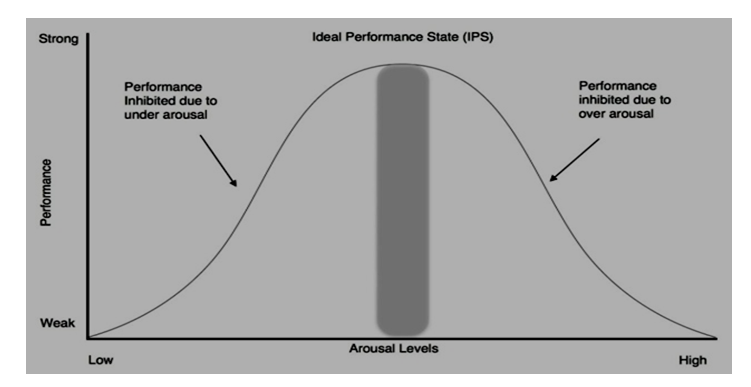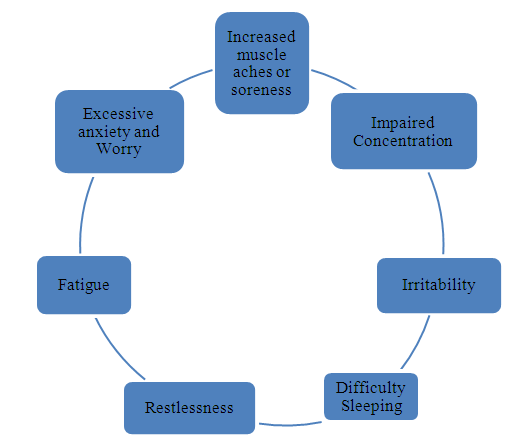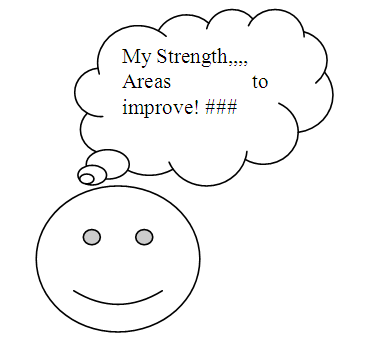-
Paper Information
- Next Paper
- Paper Submission
-
Journal Information
- About This Journal
- Editorial Board
- Current Issue
- Archive
- Author Guidelines
- Contact Us
International Journal of Sports Science
p-ISSN: 2169-8759 e-ISSN: 2169-8791
2020; 10(4): 73-76
doi:10.5923/j.sports.20201004.01

A Study on the Flow State of a Cricketer
J. Narayanan
Level B Coach, BCCI, TNCA
Correspondence to: J. Narayanan, Level B Coach, BCCI, TNCA.
| Email: |  |
Copyright © 2020 The Author(s). Published by Scientific & Academic Publishing.
This work is licensed under the Creative Commons Attribution International License (CC BY).
http://creativecommons.org/licenses/by/4.0/

Performance of a cricketer is crucial to his own career and also for his team’s success. Preparation is crucial in both physical and mental arena. Trying to break out of comfort zone decides professional success. The more a cricketer is able to maintain himself in the flow state the more successful he will be. The most important factor of this flow state is that it refers directly to the cricketers understanding / subjective perception of his own ability to perform or execute a skill / to do the task at hand and his perception of the challenge, instead of the actual challenge or ability itself. He should be able to maintain a balance between his perception about the challenge and the actual challenge. If the two of these are not balanced, it will most likely hinder or completely stop the onset of flow. If the perception of the cricketer about the challenge is greater than the perceived skill, it makes him feel anxious or worried that he not be able to complete the task without pain or embarrassment, or possibly not complete the task at all. This paper attempts to discuss the flow state and its relationship with the Performance and also some of the methods that can be used to get into the Flow state.
Keywords: Ideal Performance State, Flow, Anxiety, Mental Imagery, Mental Preparation
Cite this paper: J. Narayanan, A Study on the Flow State of a Cricketer, International Journal of Sports Science, Vol. 10 No. 4, 2020, pp. 73-76. doi: 10.5923/j.sports.20201004.01.
Article Outline
1. Introduction
- The highest level players are able to get there in the most intense of scenarios and win the crucial moments of the game and thereby win the crucial moments and the game. To handle such kind of pressure a cricketer should be in the “Zone” or in the ideal performance state for better performance. We would have often heard people saying that he is in full flow. Flow is one of the states of being, entirely in the present, more creative, productive, and happy. Flow is where you feel that you are totally involved on the job on hand without your mind wandering here and there. The brain at this state filters out everything that is not necessary and focuses only on what is important at the time. The interaction between your conscious mind and sub conscious mind will enable us to be in the / Flow /being in the zone / maintain the ideal performance state.
2. Flow State
- Csikszentmihalyi (1975) quipped that the Flow state was brought about by at least two key things: goals and feedback. In his work [5] he also discusses about the flow experience and its significance for human psychology.The significance of the concept of flow, its role in positivity, and its implications are explained below. How does one get to this a Flow state of mind? There can be several ways, different triggers and various activities that they enjoy doing. In [4] Loehr’s said that “a measurably different mental or psychological state exists when an athlete is performing well, as opposed to when he/she is performing poorly.” The extremely similar feelings of top athletes during peak performance led the way to the development of the critical understanding that mental toughness is the ability to create and maintain the right kind of internal feeling (IPS) regardless of the circumstances.Elite cricketers who have attained an optimal performance often describe their subjective state as having been “in the zone”. While difficult to assess or measure, the ‘zone’ or ideal performance state, it is often reported as being comprised of a balance of excitement and awareness, involving deep concentration and full immersion in the activity where athletes exhibit high levels of skill mastery, self-confidence and an automaticity of performance. Further it is also seen that in the IPS / FLOW STATE, there is no fear, no thinking or analysis, focus of attention is completely on the activity, a sense of time, space, and control and effortlessness prevail.Most elite performers feel that achieving flow is controllable and have learned to successfully achieve this state in order to perform to their potential as they approach peak events such as the World Cup throughout the competitive season and even to ensure they have achieved a sufficient level of readiness for each and every training session.How to achieve this Ideal performance state of to be in the Flow / Zone? Ideally there are 4 states which can be identified in the process of being in the flow state.First and foremost is that we should come out of the comfort zone. This is the most difficult stage. Because people are reluctant to change their belief systems because of the conviction they have however negative it may be. This mental programme which is stored in the subconscious mind, which is called as the comfort Zone should be challenged and accepted. The next logical step is, when a challenge is accepted there are two ways in which one deals with it. Researchers call it as Fight or Flight mode. The option to choose to whether fight or Flight mode is the biggest challenge lying before the cricketers. Those who choose the flight mode are the ones who take on the challenge and their brain accepts the challenge and takes it on from the Conscious mind – the Master to the subconscious mind and starts processing the new thoughts and react accordingly.
 | Figure 1. States of Flow |
3. Relationship between Performance and Flow State
- The Inverted-U Theory was created by psychologists Robert Yerkes and John Dodson in 1908. Figure 2 depicts a graph relating the performance and the various levels of arousal which is associated with the flow state. When the arousal levels are low, the performance tends to be poor; in other words the person is not in Flow state. When the arousal level is appropriate person is in the flow state and the performance is at peak which is shown in the middle of the graph. When the pressure mounts and the person is not able to cope up with the increased anxiety levels, the flow tends to dip leading to performance deterioration. This is shown by the sloping right hand side of the graph.
 | Figure 2. Inverted u Theory |
4. Methods to Get into the Flow State
- The next significant question would be what is to be done to create this state of mind where magic happens. It is seen from researches already done around the notion of how best to achieve one’s optimal performance state, the approach that is best, differs from one cricketer to the other. Several factors have been found to promote having a flow experience including the ones given below which will have a great impact on the process of getting into the Flow state:• Management of anxiety • Personal reflection• Match simulation• Self Imagery • Routines
4.1. Management of Anxiety
- The figure 3 depicts the symptoms of an anxious person. As cricketers are continually exposed to stressful stimuli that may evoke several emotional responses, Over a period of time, we must learn strategies to regulate our emotions so that we are managing our emotion and control such emotions to focus our attention on task-relevant cues within the competition environment. We should understand that when our mental and physical preparation has been ineffective leading to a less than optimal performance, it is often the result of having performed inadequate or insufficient emotional preparation and management.
 | Figure 3. Symptoms of Anxiousness |
4.2. Personal Reflection/ Self Analysis
- Laura et al in his work [2] describes reflection as a key factor in expert learning and refers to the extent to which individuals are able to appraise what they have learned and to integrate these experiences into future actions, thereby maximizing performance improvements. In his work he finds relation between self-reported reflection at baseline and attainment (i.e., international vs. national level) 2.5 years later in 52 elite youth athletes.
 | Figure 4. Self Analysis |
4.3. Match Simulation – Effective Practice Session
- Being able to perform well under pressure relates well to the notion of flow in that situations of high challenge and it requires cricketers to acquire and perfect the skills needed to deal effectively with their performance demands. In [7] the authors discuss the implementation a simulation environment where the characteristics of individual batsmen and bowlers are used to generate ball by ball outcomes. In [8] the authors suggest that it may be possible to determine player worth and to investigate optimal team selection and optimal batting orders.
 | Figure 5. Match Simulation |
4.4. Mental Imagery
- In [3] Hardy et al defines Mental imagery as a popular cognitive simulation technique defined as “a symbolic sensory experience that may occur in any sensory mode”.Creating a mental plan (simulating aspects of an upcoming performance) through mental imagery can prove very effective in fostering an optimal performance state prior to and during an athlete’s performance. Performing the skills required perfectly within the mind can help to activate a network of neuronal coded programmes, which strengthen the nerve pathways within the brain that control the correct execution of the skill. Garnering images of past successful performances prior to an athlete’s event/competition can keep confidence levels high and assist in lowering anxiety levels leading into the performance. Athletes should be encouraged to use all of their senses to create vivid mental images. This can include physical movement whenever possible to relate what is being imagined to the actions required to perform the skill.
 | Figure 6. Mental Imagery |
4.5. Routines
- It is important to have a personalized routine that gives a feel good attitude and that which brings the attention back to the moment of performance. Organizing oneself with a set of routine is very important. Physical organization comes first and then come the mental organization. Learned routines serve to focus by eliminating distractions and transferring thoughts from task-irrelevant to task-relevant cues. It also gives a sense of control over the situation. Every cricketer has to create a system of routine that works best for him as individual like arriving at the ground well before the time scheduled for arrival with a good frame of mind, have a feel of the ground. Take a mental stock of things that needs to be done. There is no set formula for this. This is most individual. Physical routines include warm up routines, pre-event strategy review and actions a cricketer will regularly do, physically and mentally, as part of their preparation for an upcoming Competition.Mental routines include having a self talk, learning to switch on and off between every ball, focusing on what is relevant.
5. Conclusions
- There is little doubt that achieving the optimal performance state is of considerable importance for cricketers. While some of the strategies have been discussed in this article, each cricketer is encouraged to explore the various methods and approaches that work best for them according to their personal traits, current abilities and the nature of their performance environment. This study is limited to only discussion on the flow state and some coping methods without any quantitative studies carried out.
 Abstract
Abstract Reference
Reference Full-Text PDF
Full-Text PDF Full-text HTML
Full-text HTML